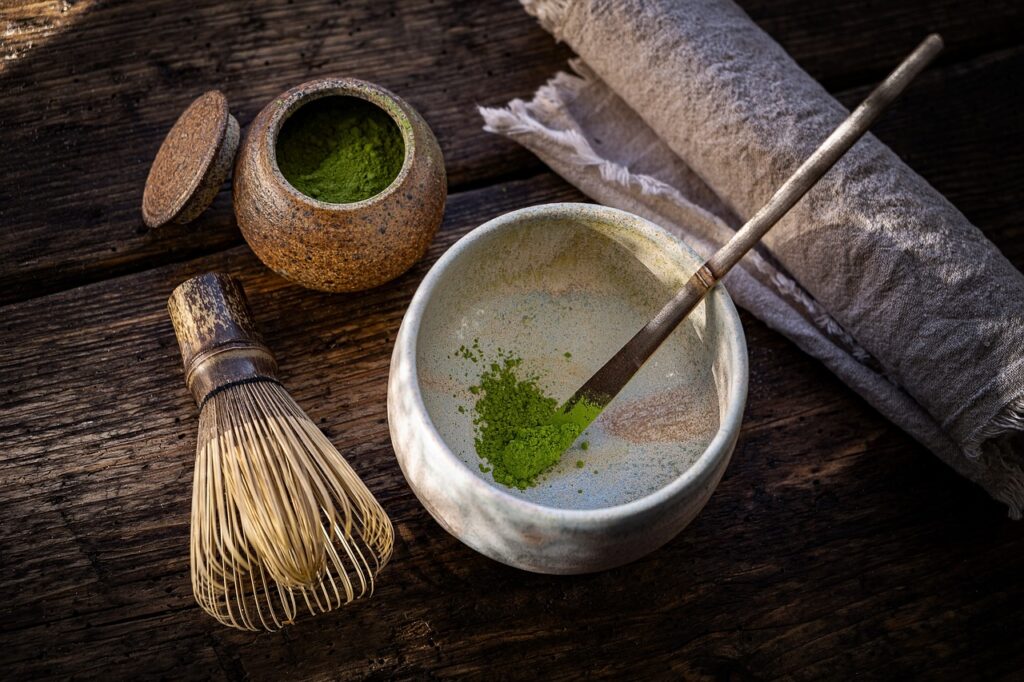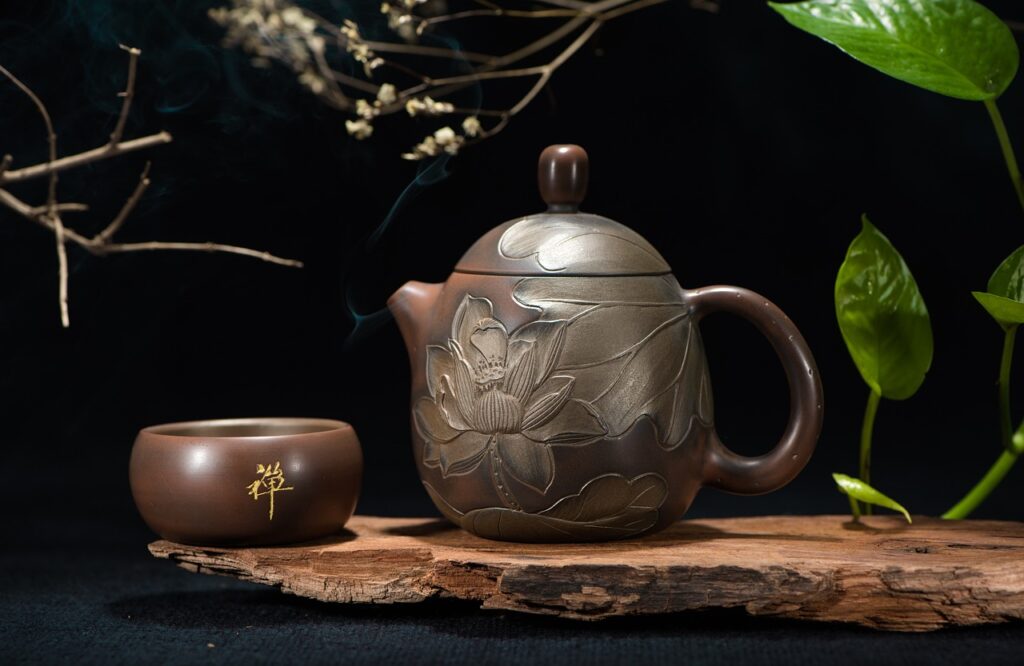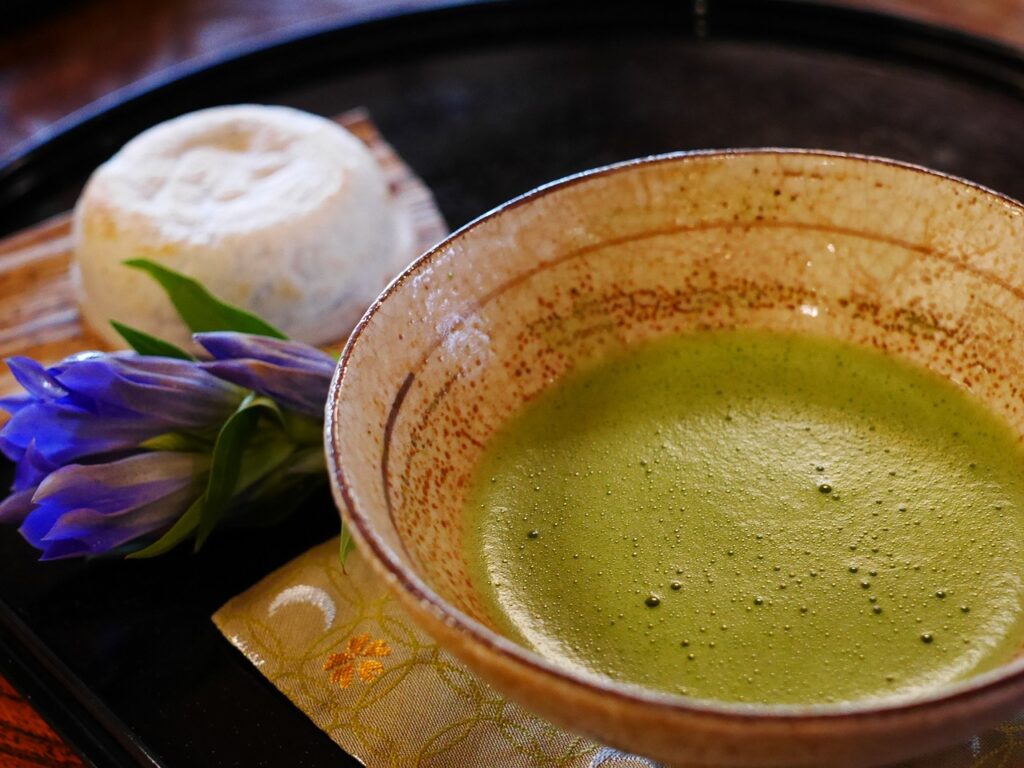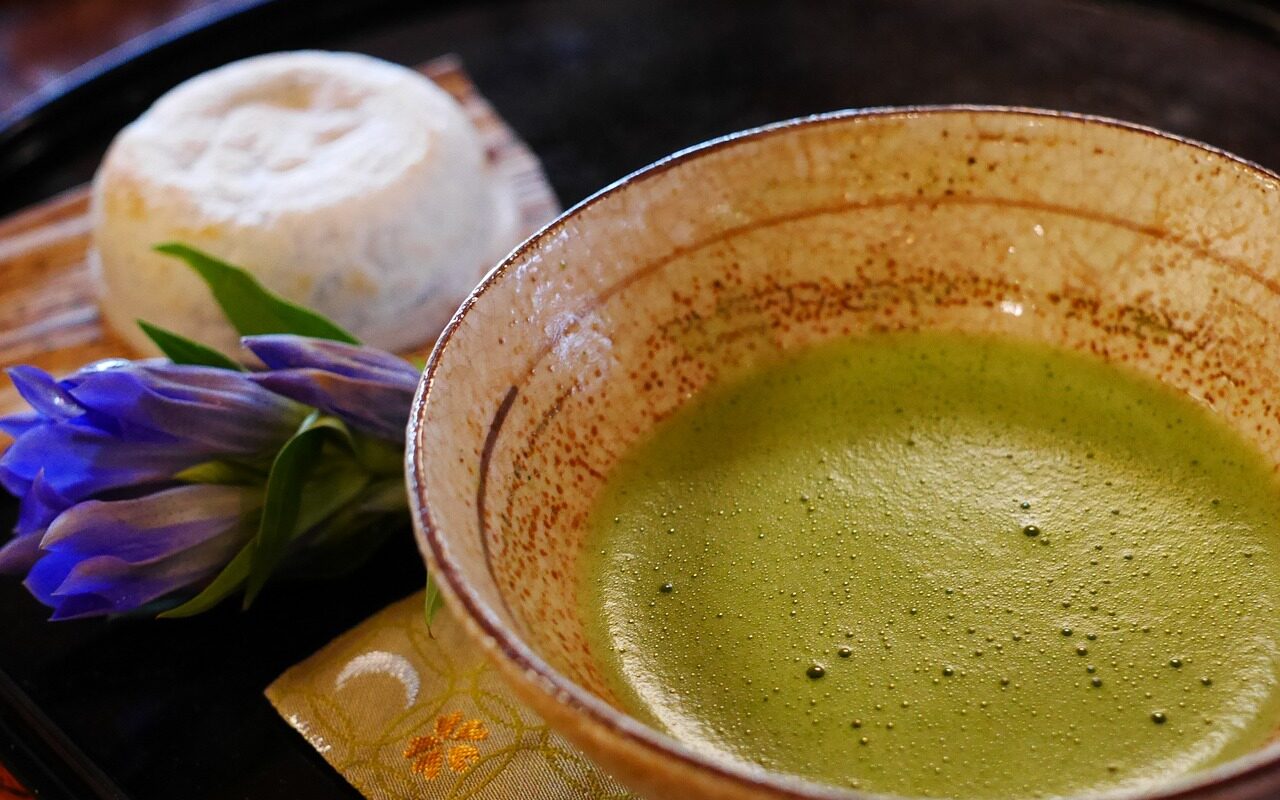Chapter 1: Introduction to tea ceremony
I think there are many people who don’t know about the tea ceremony, which is an important part of Japanese culture, so I would like to introduce it to you.
Chado literally means “the way of tea.” However, the word “do” refers to more than just the technique and method of making tea. It includes the spiritual achievements achieved through tea, a sense of beauty and civility in daily life, and the pursuit of peace of mind.
The origin of the tea ceremony is said to have originated from the habit of Chinese Zen monks who drank tea as part of their meditation practice. This culture, which was introduced to Japan, developed uniquely over time and flourished as Japan’s court culture, especially during the Heian period. During the Muromachi period, a trend arose in which samurai and Zen monks enjoyed tea ceremonies, and during the Sengoku period, tea ceremonies were held among famous military commanders, and tea ceremonies became widespread.
Then, in the Azuchi-Momoyama period, the famous Sengoku period commander Toyotomi Hideyoshi loved tea ceremony and encouraged it, and tea ceremony reached further prosperity. During this period, a master of the tea ceremony named Sen no Rikyu appeared, and his ideas and philosophy have had a great influence on today’s tea ceremony.
Sen no Rikyu proposed the four principles of “Wa-kei-seijaku” as the spirit of the tea ceremony. This represents the idea of valuing peace of mind, respect, purity of heart, and tranquility. This philosophy is reflected not only in the way they make tea, but also in the way they construct the tea room, select tea utensils, and interact with guests.
Tea ceremony is not just a culture of enjoying tea; it teaches us important things in daily life through the philosophy and aesthetic sense behind it. By learning the tea ceremony, you can refine your own mind and learn courtesy and respect when interacting with others.
Today, the tea ceremony is a traditional Japanese culture that is loved by many people both in Japan and abroad. Through tea ceremony, you can feel the beautiful spirit and culture of Japan.

Chapter 2: Historical and cultural background
We will tell you how the tea ceremony has developed in Japan until now, combining history and culture.
The origins of Japanese tea culture date back to China during the Tang and Song dynasties. Around the 8th century, Japanese monks visited China for training, and brought tea back to Japan along with the tea culture. It is said that it was first used by monks as a meditation aid and as a medicine. During the Heian period, this tea culture spread to the imperial court and was enjoyed by the aristocrats.
In the Kamakura period, tea ceremony, which was strongly influenced by Zen Buddhism, appeared. The tea ceremony of this period was a fusion of the tea culture of China’s Song Dynasty and the local characteristics of Japan, and was centered around sencha. In particular, the tea ceremony as a part of meditation spread among Zen monks, and this period became the foundation for the later development of the tea ceremony.
In the Muromachi period, tea ceremony became popular among samurai and warriors. During this period, tea ceremony served as both a social occasion and a means of status among samurai. One of the leading tea masters of this era was Sen no Rikyu, who is today also known as the father of tea ceremony. He brought a simple beauty to the tea ceremony at the time, which was becoming more and more complex, and established a spirit of “Wa-kei-seijaku.”
During the Azuchi-Momoyama period, tea ceremony flourished under the influence of Toyotomi Hideyoshi. Hideyoshi worked with Sen no Rikyu to spread the tea ceremony, and feudal lords and military commanders also became devoted to the tea ceremony one after another.
In the Edo period, tea ceremony began to spread among the common people, and many people began to enjoy it. During this period, tea ceremony was not just a social gathering, but became a part of daily life.
In modern times, with the influx of Western culture, much of Japan’s traditional culture has faded, but the tea ceremony has retained its value and is still loved by many people. Behind this is the spirit of “Wa-kei-seijaku” that Sen no Rikyu established.
In summary, the history of the tea ceremony is deeply connected to Japan’s history and culture, and has undergone many changes during its development. At its core, it reflects the aesthetic sense and spirit of the Japanese people, which has been inherited to this day.

Chapter 3: Modern tea ceremony
We will introduce you to what the tea ceremony is like in modern Japan.
In today’s fast-paced society, the tea ceremony may seem like a classic hobby, but for many people it is regarded as a spiritual oasis and a special time in their daily lives. Spending time in a quiet tea room, away from the hustle and bustle of the city, is a refreshing experience for many people.
In recent years, there has been a growing movement among the younger generation to embrace the appeal of the tea ceremony. One reason may be that modern people are looking for a place and time to free themselves from the busyness of everyday life. Additionally, as young tea masters share the appeal and techniques of tea ceremony on social networking sites such as Instagram and YouTube, tea ceremony has become known to a wider audience.
Today’s tea ceremony continues to preserve its traditional form, while experimenting with new ways to enjoy it. For example, various ways to enjoy the tea ceremony are being proposed, such as a cafe-style tea ceremony experience or collaboration with an art event.
Also, from an international perspective, the tea ceremony is highly regarded as a part of Japanese culture. Tea ceremony experiences are very popular among overseas tourists as a way to experience traditional Japanese culture. In addition to experiences in traditional tea rooms, the number of tea ceremony experiences in modern spaces is increasing, and tea ceremonies are being offered in ways that meet a variety of needs.
Even in Japan, the use of tea ceremony as a regional development and tourism resource is being promoted. In regions with their own unique tea ceremony cultures and traditions, events and workshops are held that take advantage of these traditions, and the tea ceremony is being reevaluated as a regional attraction.
In this way, even in modern Japan, the tea ceremony has not lost its value, and is now being appreciated and enjoyed in new ways. The modern tea ceremony, which is a fusion of tradition and modernity, continues to convey Japan’s aesthetic sense and culture to many people today.

Chapter 4: Famous works featuring tea ceremony
We will introduce some famous works that feature the tea ceremony.
The tea ceremony is a traditional Japanese culture with a unique aesthetic sense and philosophy that has influenced many writers and artists. As a result, tea ceremony-themed works have been created in many genres of literature, film, and art.
First, in the world of literature, there is Shugoro Yamamoto’s “Sand Vessel.” This novel depicts the main character facing his life against the backdrop of a tea ceremony. Yamamoto’s unique brushwork precisely expresses the depth of the tea ceremony and the philosophy behind it, creating a work that leaves readers deeply moved.
Next, a representative work in the world of movies is director Kinji Fukasaku’s “Samurai no Menu”. This movie is set in the Sengoku period and depicts the life of a samurai wife and the role of the tea ceremony in that life. The movie beautifully depicts the power of the tea ceremony to enrich people’s hearts and create bonds between people.
Additionally, in the field of art, artists such as Yayoi Kusama and Baiyuki Murayama have created works based on the tea ceremony and its philosophy. These works reinterpret the spirit and aesthetic sense of the tea ceremony in a modern way of expression, conveying its charm from a new perspective.
Furthermore, works with tea ceremony themes have also been created in the fields of performing arts and music. Many traditional Noh and Kyogen plays are based on the tea ceremony, and their deep philosophy and aesthetic sense are expressed on stage. Contemporary musicians and performance artists are also creating works that incorporate the spirit of the tea ceremony.
Through these works, the tea ceremony continues to be loved by many artists as not just a part of everyday life, but as a means of expressing Japanese culture, philosophy, and aesthetic sense. These works with the theme of tea ceremony can convey the charm of tea ceremony and the philosophy behind it from various angles, providing us with a new perspective.
Chapter 5: Summary
This is a summary about the tea ceremony.
In this series, we have touched on the deep history, cultural background, and contemporary presence of the tea ceremony, as well as many famous works on the theme of the tea ceremony. I hope that through this knowledge, you were able to reaffirm how important the tea ceremony is as a part of Japanese traditional culture.
The tea ceremony is more than just the act of making and drinking tea. It values the exchange of minds, a sense of unity with nature, and above all the spirit of “once in a life, once in a lifetime.” This means valuing once-in-a-lifetime encounters and living each moment to the fullest. This philosophy is deeply rooted in Japan’s aesthetic sense and people’s way of life.
Additionally, the tea ceremony often reflects the historical background and social conditions of the time. The ancient traditions and customs, as well as the thoughts and philosophies of the people who supported them, are alive in each movement and tool of the tea ceremony. By understanding this point, you will be able to more deeply appreciate the essence and charm of the tea ceremony.
Even today, the tea ceremony holds a special place in the hearts of Japanese people. As urbanization and information technology progress, many people are becoming interested in the tea ceremony as a place to take a break from their busy daily lives and calm their minds. The quiet time in a tea room refreshes our minds and brings new awareness and gratitude to our daily lives.
Furthermore, works that take the tea ceremony as its theme play an extremely important role as a means of widely conveying its aesthetic sense and philosophy. The fact that the tea ceremony has been featured in a variety of genres, including literature, film, and art, shows its universal appeal.
Finally, it can be said that the tea ceremony is not just a tradition or culture, but is deeply connected to our way of life and state of mind. I hope that this beautiful culture will continue to be passed on to the next generation, and that its value and charm will be widely conveyed.
